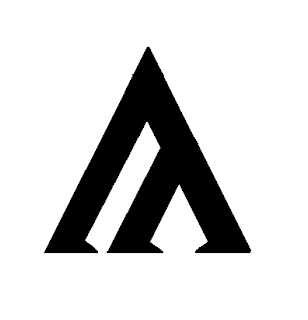Ni estas Cenáculanoj, La Maafaoni Rito-Maniero de Melkicedek, Nigra Despocini, Filoj kaj Filinoj de Cedek, La lasta bando de Habiru... Kukasru de Jesxurun.
Fakta Scio ('actual knowledge') is simply the one and only truth, yet Fakta Scio is not for all people. The popular lies are more comfy for the "Trompita" ('supporters of stat quo') because some facts cause fear. If your faith is fragile, stop reading this now. For those still reading, here's a few examples of Fakta Scio: The snake in the Garden of Eden is the Sumerian God 'Tiamat' and not the devil, The Gospel of Thomas is the oldest and most pure Gospel of all (it begot Mark's & Luke's), the Sumaritans are more Jewish than the modern-day Israelites, Mt. Karkom is the real 'Mt. Sinai', Moses was somehow influenced by Akhenaten's Sun God, Mary Magdalene is not a hoe (100% made-up by Pope Gregory in the 5th Century), Africa was the center of the Christian world (Carthage was a Christian City before Rome was), the true cross was not shaped like the lower case letter T (rather, a Iota Chi), Jesus was killed for taking John's place as leader of The Way, and the Magi most likely followed the Star of Bethlehem to welcome the birth of the baby Messiah 'John'. My sincere apologies to any members of the Trompita, for any and all actual knowledge that I may have forced apon you.
"A cleansing of the temple starts now, with us here." -Amatan
Yahshua in Greek becomes "Iasou" in truth, but Iesous is the common incorrect translation. So in English it really becomes "Iasus", and not Jesus. The letter 'a' (alpha) is changed to 'h' (eta) to distance the name from YHWH with the addition of the vowel point 'shewa'. His 3 officially excepted Hebrew names (none of them being Yahshua) appears 219 times in the New Testament:
216 times found: Yahusha YOD-HAY-UAU-SHIN-AYIN2 times found: Yahushua YOD-HAY-UAU-SHIN-UAU-AYIN
1 time found: Y’shua (Neh. 8:17) YOD-SHIN-UAU-AYIN
Hypsistarians, i.e. 'Worshippers of The Most High' is a term appearing in documents dated about 200 BC to approx. 400 AD, but in this context it means 'Theophobes' (God-Fearers), referring to the members of the Sandalphon Nome in West Asia.
In the OT Bible, a Nazirite (in Hebrew: נזיר, nazir) refers to one who voluntarily took a vow described in Numbers 6:1–21. The proper noun "Nazarite" comes from the Hebrew word nazir meaning "consecrated" or "separated". 'Jesus The Nazirite' may be the correct translation of the 'Jesus of Nazareth' title. In the KNHI, the Nazirite vow requires the man or woman to:
1. Abstain from wine, wine vinegar, grapes, raisins, intoxicating liquors, vinegar distilled from such substances, and eating or drinking any substance that contains any trace of grapes.
2. Refrain from cutting the hair on one's head; but to allow the locks of the head's hair to grow.
3. Not to become impure by corpses or graves, even those of family members.
(After following these requirements for 3, 6 or 9 months, the Subcanon would immerse in a ritual bath and make several offerings) Most members will take this vow several times within their lifetime. The average term for Canons is 6 months, but many Prebendaries took the vow for a year or more. Offerings are brought to the same ecclesium the vow was first taken by the member. And our modern-day Marzeah have nothing to do with death.
Why is the description "Christian" not good enough for this Chirche? Because Church Fathers like Tertullus didn't use the word. The first confirmed use of the word "Nazarenes" (in Greek, "Nazoraioi") occurs from Tertullus before Antonius Felix. Tertullus did not acknowledge 'Iesous ho Nazoraios' ("Jesus of Nazareth") as 'Iesous ho Christos' ("Jesus the Messiah") and did not call Paul's sect 'Christianoi' ("followers of the Messiah"). The Greek New Testament uses "Nazarene" six times and "Nazorean" 13 times (as seen below). In the Book of Acts, "Nazorean" is used to refer to a follower of Jesus, i.e. a Christian, rather than an inhabitant of a town. More evidence needed? "Notzrim" is the modern Hebrew word for 'Nazoreans/Christians' and commonly used to mean "Christian" in Syriac (Nasrani) and Arabic.
The word 'Nazorean' in the NT:
"Nazoraios", Matthew 2:23, Luke 18:37, John 19:19 Acts 6:14, Acts 22:8
"Nazoraiou", Matthew 26:71, Acts 3:6, Acts 4:10, Acts 26:9
"Nazoraion", Acts 24:5, John 18:5, John 18:7, Acts 2:22
Some bands and classes raise funds through colportage services with the Prester John Bible, a polyglot New Testament bible with the 'Gospel of Mary', 'Infancy Gospel of Thomas', 'Infancy Gospel of James' and the 'Acts of Paul & Thecla' added. Will be available in English-Esperanto, then in Spanish-Esperanto (later in Seychellois Creole-Esperanto & Hatian Creole-Esperanto). "The Gospel Teaching" is the other scripture published by the chirche and connexion (ˁApiru).








